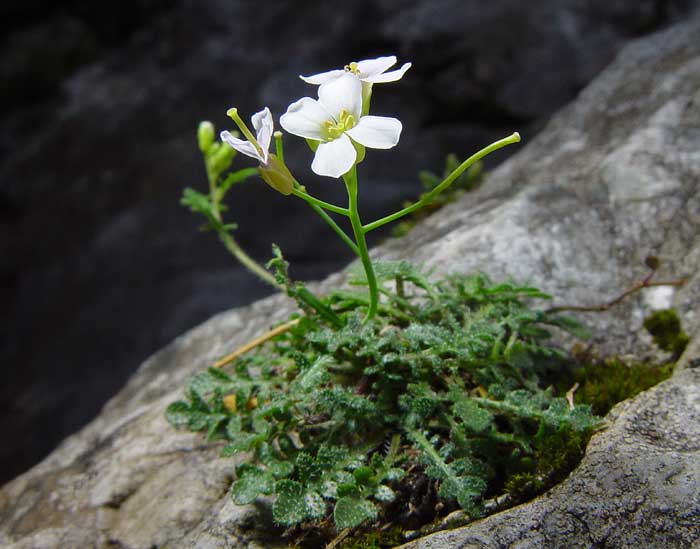SPYING OR
COLLABORATION?
Serpentines
are soils of harsh and rocky mineral formation, extremely rich in cobalt,
nickel, chromium, potassium and phosphorus. These conditions are almost
opposite to the needs of most plants, which look rather soft soils, with good
drainage, and lightly charged with minerals, in order to have a healthy
growing, with a good nutritional balance.
Yet
serpentine harbor a peculiar vegetation, consisting generally of low
development plants, often coniferous, scrubland kind.
Photo: http://www.californiachaparral.com/images/600_DSC_0113_II.jpg
A team of
researchers of the John Innes Centre in the UK, wondered how plants, adapted to
"normal" living conditions, could succeed in colonizing, live and
multiply, in a so extremely hostile environment.
To study
this question, they collected seeds from different populations of Arabidopsis
arenosa, a cousin of the famous Arabidopsis thaliana, the laboratories favorite
plant. The aim was to study the genome of populations living in fertile soil,
and compare it with the genome of plants living in serpentine soils.
For this
they identified different populations of A. arenosa spread throughout Europe,
including some in serpentine soils.
Then
they planted the harvested seeds to study the genome of the progeny plants.
Photo: http://blog.garnetcommunity.org.uk/wp-content/uploads/2015/07/Arabidopsis-arenosa02.jpg
They
observed, to their surprise, that A. arenosa serpentine has a slightly
different genome, with characters from another plant, concretely Arabidopsis
lyrata, another cousin, usually adapted to life in serpentines. These genes are
absent in "normal" A. arenosa strains.
For the moment, the formulated
hypothesis is that A. arenosa managed to "borrow" the gene that
allows it to survive in such difficult conditions.
Researchers
will now accurately identify the natural mechanisms that led to this gene
union, between certainly neighboring plants, but a priori incompatible.
Another
question will be whether a plant has "borrowed" these characters, or
if its cousin "graciously lent" them to it.
A
fascinating debate in perspective, on the "vegetal psychology".
It is still
very surprising that plants, in a totally spontaneous and natural way, are able
to borrow genes to related species, to adapt to a hostile environment.
These are
natural GMOs, whose aim is, as always, the survival of the species.
So as to prove, in the plant world also,
need drives the law.
Photo: http://flora.nhm-wien.ac.at/Bilder-A-F/Cardaminopsis-arenosa-1.jpg



Aucun commentaire:
Enregistrer un commentaire